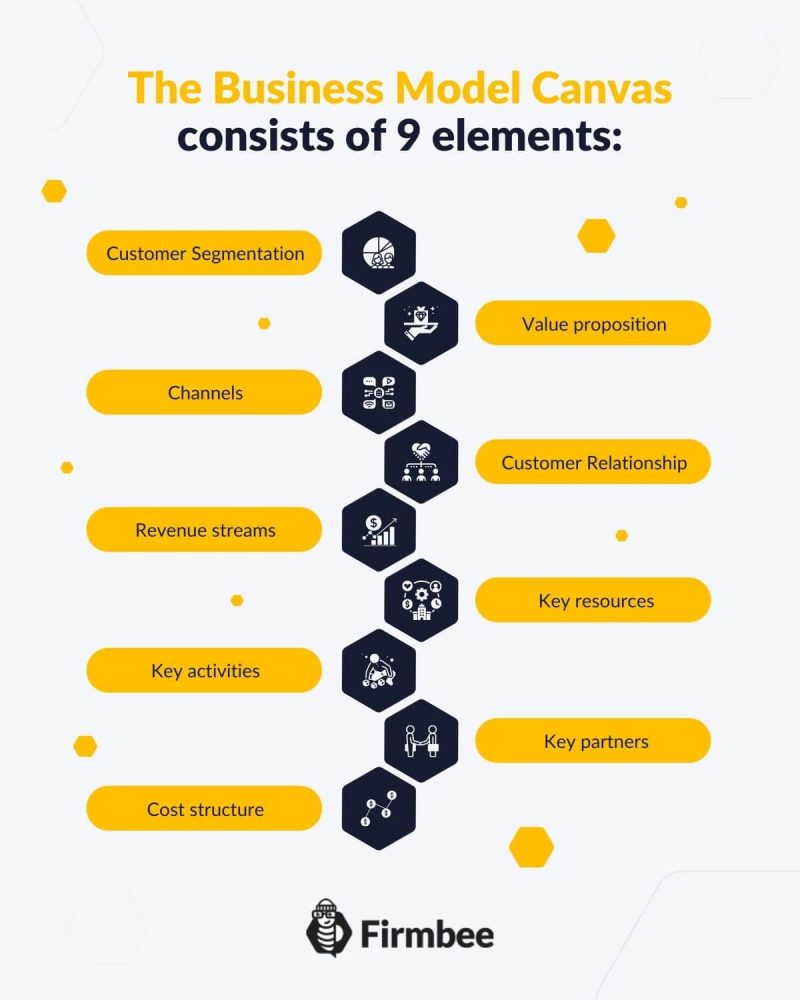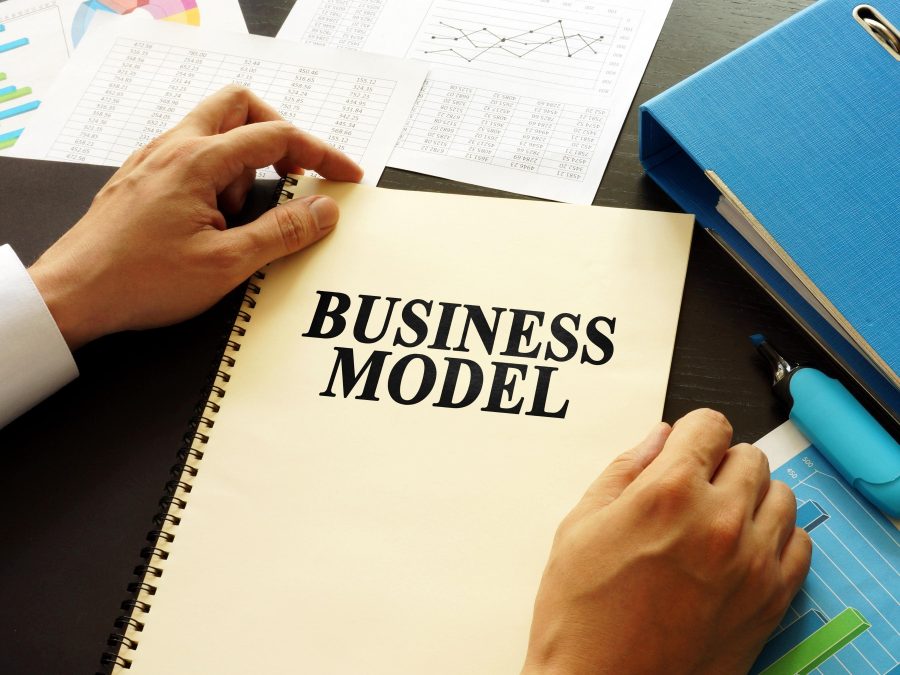A business model is considered to be the foundation of most businesses. What is a business model and what elements does it consist of? Why should all companies develop it? We will answer these and other questions in the following article.
Business model – table of contents:
- What is a business model?
- Why is it worth creating a business model?
- Elements of a Business Model
- Business Model Canvas
- Lean Canvas
What is a business model?
A business model for a company is a long-term blueprint for selling its products or services. This concept differentiates depending on the approach taken:
- financial approach – focuses on how the company will generate profits,
- strategic approach – looks at the company’s development and market position,
- operational approach – takes into account the processes occurring within the company and their impact on creating value for customers.
Why is it worth creating a business model?
A company that wants to operate on a legal basis should analyze its business model. It guides the enterprise towards certain pre-defined goals. Having a model also helps to maximize the use of available resources, which will translate into profits.
You can formulate a business model not only at the beginning but also at later stages, as it can evolve as the business grows. This model lets the company organize all the information about the product. It is also easier to see possible shortcomings and deficiencies.
Elements of a Business Model
The basic way to create a business model is to answer four questions:
- Who? – Who is the company’s customer? What are their wants and needs?
- What? – What product does the company offer? How does this product address customer needs?
- How? – How will the product be delivered to customers?
- Why? – Why should customers pay for this product?
Business Model Canvas
Alex Osterwalder developed Business Model Canvas, which has become an essential tool to define how a business operates. Additionally, it allows you to determine if the business meets the needs of your customers with its proposition and if it is profitable. The Business Model Canvas consists of 9 elements:
- Customer Segmentation – Customers are the foundation of any business model. To better respond to their needs, a company can group customers into smaller segments by, for example, common interests, or by demographic characteristics. After successfully defining the groups, the company should isolate those whose needs it plans to meet.
- Value proposition – This is the element that determines why customers choose a particular company’s offering rather than opting to use a competitor’s product. The value proposition somehow solves buyers’ problems or addresses their needs.
- Channels – This is another element of the business model. It defines how the brand communicates with customers and communicates the value proposition to them. Channels help define the touchpoints with the audience that influence the final customer experience.
- Customer Relationship – This is the type of interaction that occurs between the company and the customer. A company should specify how it wants to build relationships with a particular customer segment and what buyers expect, such as whether they prefer direct contact or more automated contact, etc.
- Revenue streams – this model determines the financial sources generated by the company. The focus should be on determining the right price the customer will be willing to pay and the most appropriate business model: subscription, one-time payment, subscription, etc. You can also consider additional sources of funding, such as loans, grants, etc.
- Key resources – this is the set of all infrastructure necessary for the proper functioning of processes in the company. Physical resources (equipment, hardware), intellectual resources (knowledge, patents), human resources and financial resources should be taken into account.
- Key activities – these are the most important activities to undertake by the company for the model to function properly. The activities undertaken will vary depending on the nature of the company. When selling a physical product, consideration must be given to its design and manufacture, whereas when offering a service, knowledge is needed and how to fulfill the commitment to the customer.
- Key partners – this is the entire network of partners, suppliers, associates that affect the smooth operation of the business.
- Cost structure – is a set of all incurred expenses resulting from activity in a given business model. These can be both fixed and variable costs.

Lean Canvas
The Business Model Canvas functions as a tool for well-established companies. But for newcomers, economists developed a slightly different version of the template called Lean Canvas. It differs from the Business Model Canvas in four aspects:
- Problem – it is necessary to objectively specify what problem the product solves. Such an accurate diagnosis enhances matching the offer to the market demands. At this stage, it is also worth analyzing the competition to find an advantage.
- Solutions – at this stage, it is necessary to describe the offered product very precisely and define its MVP (Minimum Viable Product). It’s a prototype version with a sufficient number of functions for a launch on the market and improvement with new capabilities in the future.
- Indicators – it is necessary to specify how the company will define its success, what parameters will indicate its rate and what ratios the management should look out for.
- Competitive advantage – these are all the aspects that influence the uniqueness of a product and make it stand out from the competition. It is also worth thinking about securing the product against copying and theft.
Defining your business model enables you to know whether your business aims at delivering value to your customers and whether your business development is heading in the right direction.
If you like our content, join our busy bees community on Facebook and Twitter.
Author: Andy Nichols
A problem solver with 5 different degrees and endless reserves of motivation. This makes him a perfect Business Owner & Manager. When searching for employees and partners, openness and curiosity of the world are qualities he values the most.
The most important questions
-
What is a business model?
A business model is a long-term plan to increase a company's operating profit.
-
What are the key elements of a business model?
The main elements are answers to the questions:
- Who is the company's customer?
- What does the company offer (what product)?
- How will the product be delivered?
- Why would the customer want to pay for it?
-
Why create a business model?
Companies with a business model don’t waste time and potential in their workings and make maximum use of the resources they have.


















